Welcome to a world of vibrant creativity and fruity fun! In this article, we’ll explore the delightful world of kiwi coloring pages. Whether you’re a budding artist looking for a new canvas or a parent seeking an engaging activity for your little ones, our kiwifruit coloring sheets offer a unique and enjoyable way to unleash your imagination and add a burst of color to these charming fruits. Join us as we dive into the world of kiwi, their rich history, and the endless possibilities that await as we pick up our coloring tools and bring these fuzzy green gems to life on paper.
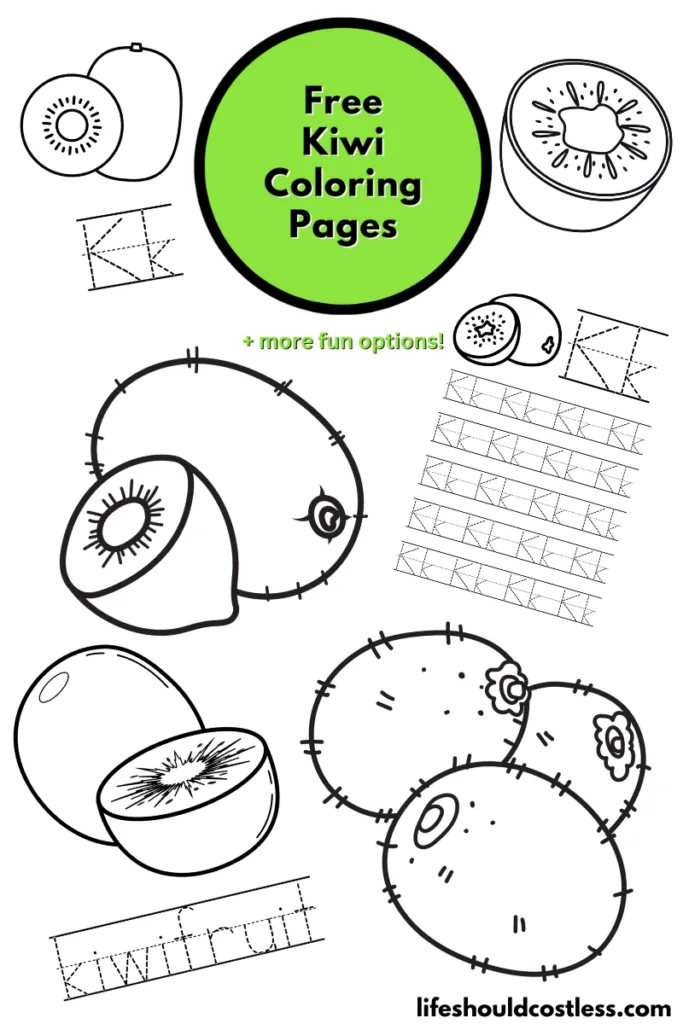
You’re welcome to choose the design that resonates with you the most, download the free PDF template, print it out, and savor the joy of coloring as much as you like.
Alternatively, these designs can also serve as embroidery patterns or serve as a wellspring of inspiration for creating intricate line tattoos.
Table of Contents, Skip Ahead To What You're Looking For
Kiwifruit facts
For those who are newcomers to my coloring pages, it’s important to mention that I enjoy providing the opportunity to delve into the subject matter, enabling you to seamlessly incorporate an educational component into your coloring experience.
So, let’s get started!
Here are lots of fun and interesting facts about kiwifruit:
- Origin: Kiwifruit is native to China, where it was originally known as “Yang Tao.” It was later renamed “Chinese gooseberry” when it was introduced to New Zealand in the early 20th century.
- Name Change: In the 1960s, New Zealand started exporting Chinese gooseberries, but they decided to rebrand them as “kiwifruit” to capitalize on the country’s national symbol, the kiwi bird. The name change helped popularize the fruit worldwide.
- Furry Skin: Kiwifruit is known for its unique fuzzy skin, which is not typically eaten. However, it’s entirely edible and provides additional dietary fiber.
- Varieties: There are several kiwifruit varieties, but the most common ones are green (Actinidia deliciosa) and gold (Actinidia chinensis). Gold kiwis are sweeter and have a smoother skin.
- Nutrient-Rich: Kiwifruit is a nutritional powerhouse. It’s an excellent source of vitamin C, vitamin K, vitamin E, and dietary fiber. In fact, it has more vitamin C per serving than an orange.
- Antioxidants: Kiwifruit is packed with antioxidants, such as vitamin C and vitamin E, which help protect cells from oxidative damage and boost overall health.
- Low in Calories: Kiwifruit is relatively low in calories. One medium-sized kiwi contains about 61 calories, making it a healthy choice for weight-conscious individuals.
- Heart-Healthy: The high levels of potassium in kiwifruit can help lower blood pressure and reduce the risk of stroke and heart disease.
- Digestive Aid: Kiwifruit contains an enzyme called actinidin, which can help with digestion by breaking down protein in the stomach.
- Immune Boost: Because of its exceptional vitamin C content, kiwifruit is known for its immune-boosting properties, helping the body ward off illnesses and infections.
- Natural Laxative: Kiwifruit’s fiber content, along with actinidin, can also act as a natural laxative, aiding in regular bowel movements.
- Sleep Aid: Kiwifruit contains serotonin, which is known to help regulate sleep patterns. Consuming kiwifruit before bedtime may improve sleep quality.
- Allergies: Some people may be allergic to kiwifruit, with symptoms ranging from mild itchiness to more severe reactions. This is often associated with the protein actinidin.
- Cultivation: Kiwifruit is grown in various countries, with New Zealand, Italy, and China being some of the largest producers. They require a temperate climate to thrive.
- Pollination: Kiwifruit plants have separate male and female vines. Bees are essential for pollination, and growers often use hives of bees during the flowering season to ensure fruit development.
- Storage Tip: Kiwifruit can be stored in the refrigerator for several weeks. To ripen them faster, place them in a paper bag with an apple or banana, which produces ethylene gas, a natural ripening agent.
- Culinary Uses: Kiwifruit can be enjoyed in various ways, including eating them fresh, adding them to fruit salads, blending them into smoothies, using them as a natural meat tenderizer, or even making kiwi preserves.
- Unique Texture: Kiwifruit has a distinct combination of tartness and sweetness with tiny black seeds that are edible, providing a unique textural contrast.
- DIY Face Masks: The vitamin C content in kiwifruit makes it a popular ingredient in homemade face masks for its potential to promote skin health and reduce signs of aging.
- Sustainability: Kiwifruit production is becoming more sustainable, with efforts to reduce waste through the use of biodegradable packaging and environmentally friendly farming practices.
These intriguing facts highlight the versatility, nutritional value, and cultural significance of kiwifruit, making it a fruit worth exploring and incorporating into your diet.
We learned a lot, but there’s definitely more to know about kiwis.
If you would like to keep reading, here are some other reputable resources to learn about them:
- https://en.wikipedia.org/wiki/Kiwifruit
- https://www.britannica.com/plant/kiwi-fruit
- https://www.medicalnewstoday.com/articles/271232
- https://foodprint.org/real-food/kiwis/
- https://www.pbslearningmedia.org/resource/2d3dffd4-5fca-4f52-a5f9-3161eafa5702/kiwifruit-americas-heartland/
- To see all of my free printables, go here.
- If you would like to see my index of free printable coloring pages, go here!
- All of my botanicals coloring pages are found here.
- Or, my other fruits coloring pages can be found here.
Coloring tips
Coloring pictures of kiwifruit can be a delightful and creative activity.
Here are some of my best tips and tricks to get the most out of your kiwi coloring experience:
- Reference Images: It’s helpful to have reference images of actual kiwifruits or use the fruit itself (found at most grocery stores) to get an idea of their appearance. This will aid you in choosing the right colors and shading.
- Start with Light Colors: Begin by lightly coloring the kiwifruit’s base color, which is typically a light green. Use gentle strokes and gradually build up the color to achieve the desired shade.
- Texture and Patterns: Kiwifruits have a unique texture with tiny black seeds and a brownish center. To recreate this, you can use small, circular strokes or dots to represent the seeds. The center of the kiwifruit can be shaded with brown or a mix of brown and green to capture its appearance accurately.
- Layering Colors: Experiment with layering different shades of green to add depth and dimension to your kiwifruit. You can also add subtle hints of yellow or gold to create highlights.
- Blending: If you’re using colored pencils or markers, you can blend colors together to create a smooth transition between different shades. You can use a blending pencil, a colorless blender marker, or even a cotton swab for this purpose.
- Realism or Creativity: Decide whether you want to create a realistic depiction of a kiwifruit or if you’d like to get creative and whimsical. You can play with colors and patterns to give your kiwifruit a unique, artistic touch.
- Background: Consider adding a background to your coloring page to provide context or atmosphere. A simple green or yellow background can make the kiwifruit pop, or you can get imaginative with an abstract or nature-themed background.
- Experiment: Don’t be afraid to experiment with different coloring techniques and materials. Try stippling, cross-hatching, or even watercolor if you’re feeling adventurous.
- Take Your Time: Coloring can be a relaxing and meditative activity, so take your time to enjoy the process. There’s no rush, and you can always come back to it later if needed.
- Protect Your Work: If you’re using markers or wet mediums, place a sheet of paper under your coloring page to prevent bleed-through onto the surface beneath.
- Final Touches: Once you’re satisfied with your coloring, you can add final touches like highlights with a white gel pen to make your kiwifruit illustration really stand out.
- Frame or Share: Consider framing your completed kiwifruit picture or sharing it with friends and family. It can make for a lovely piece of art or a thoughtful gift.
Remember that coloring is a form of self-expression, so don’t be afraid to let your creativity shine.
Whether you aim for realism or want to create a whimsical kiwifruit masterpiece, the most important thing is to enjoy the process and have fun!
Options For Printing:
Letter K is for kiwifruit writing practice worksheets
*My letter K is for kiwifruit printable coloring sheets are specifically tailored for classroom use (gearing towards preschool and kindergarten age kids) and are the only available options on this page that do not require written permission for public use.
However, if someone inquires about their source, kindly share the link to this post. Your cooperation is greatly appreciated!
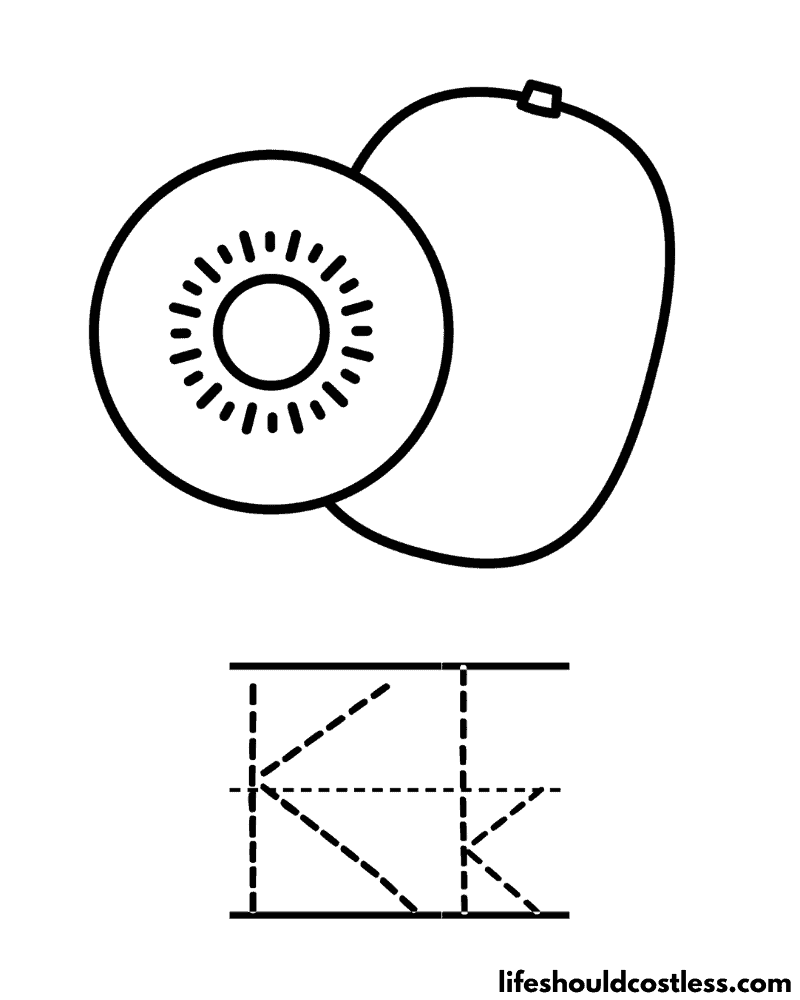
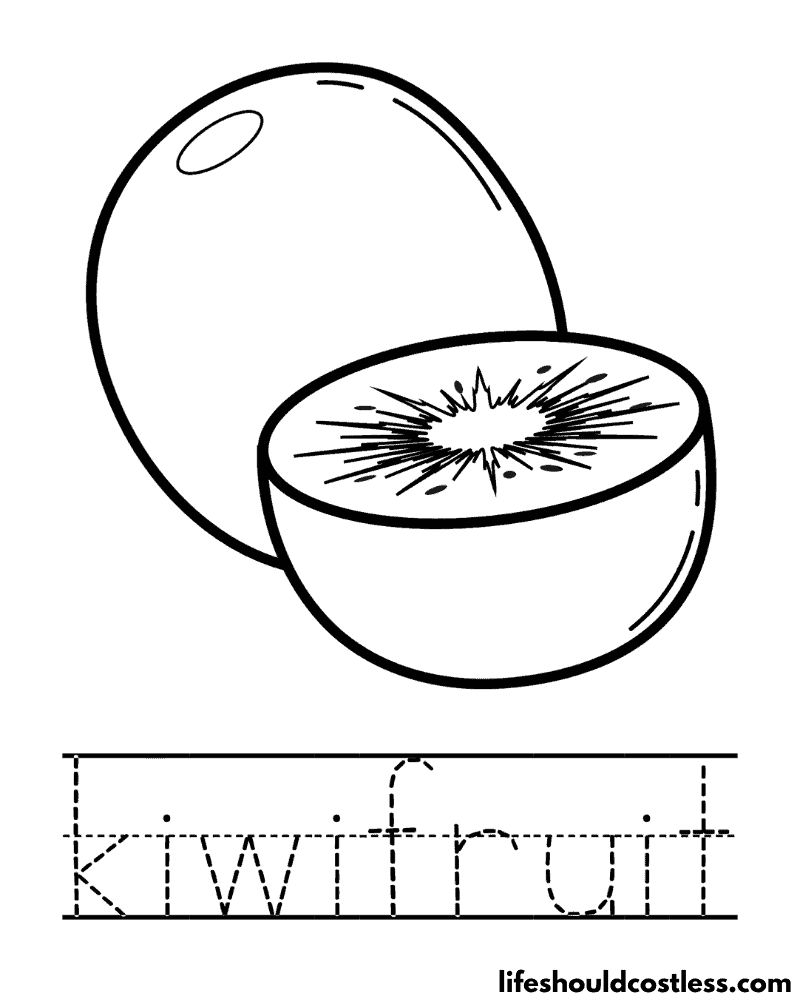
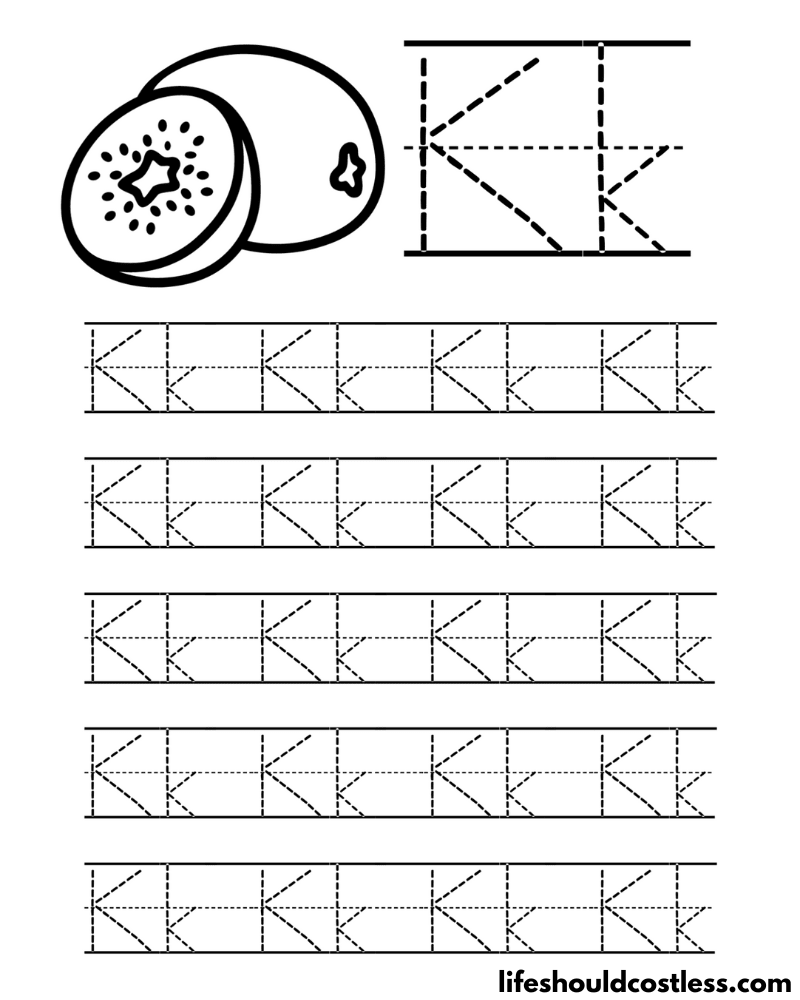
Various kiwifruit designs
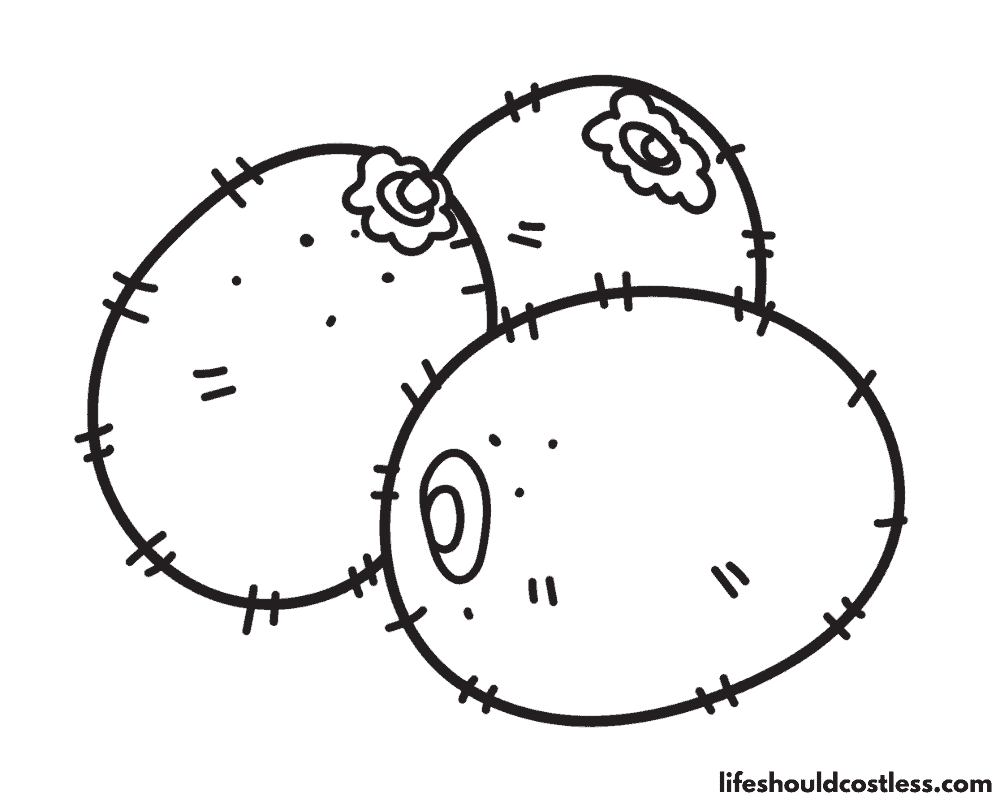
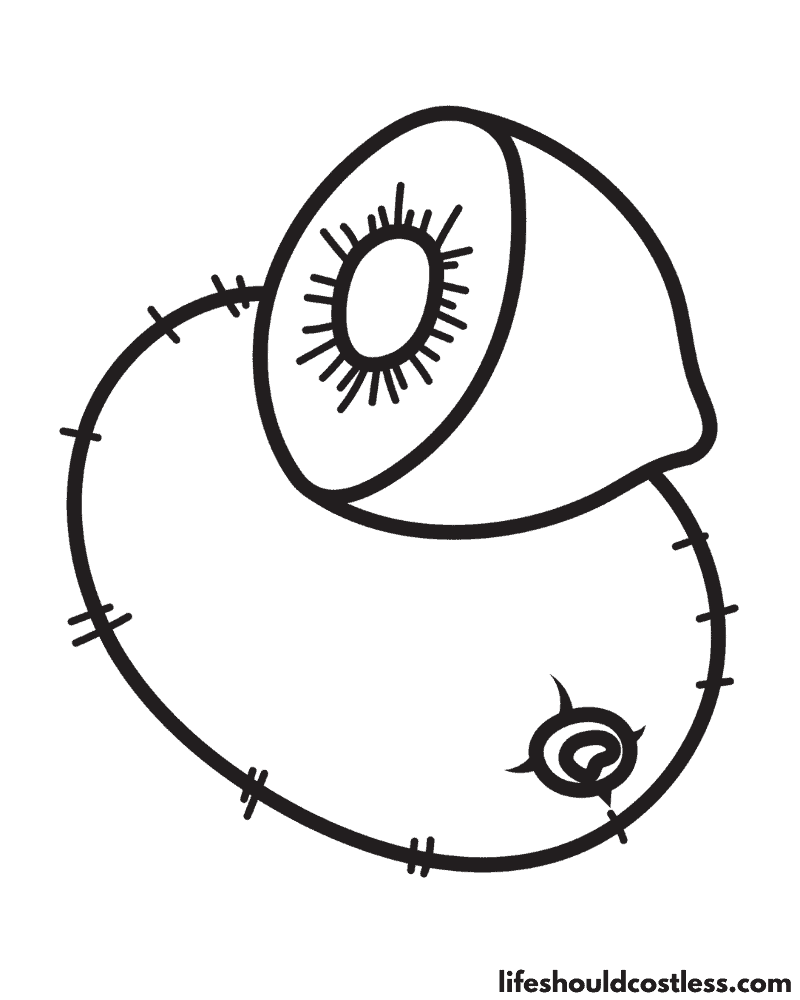
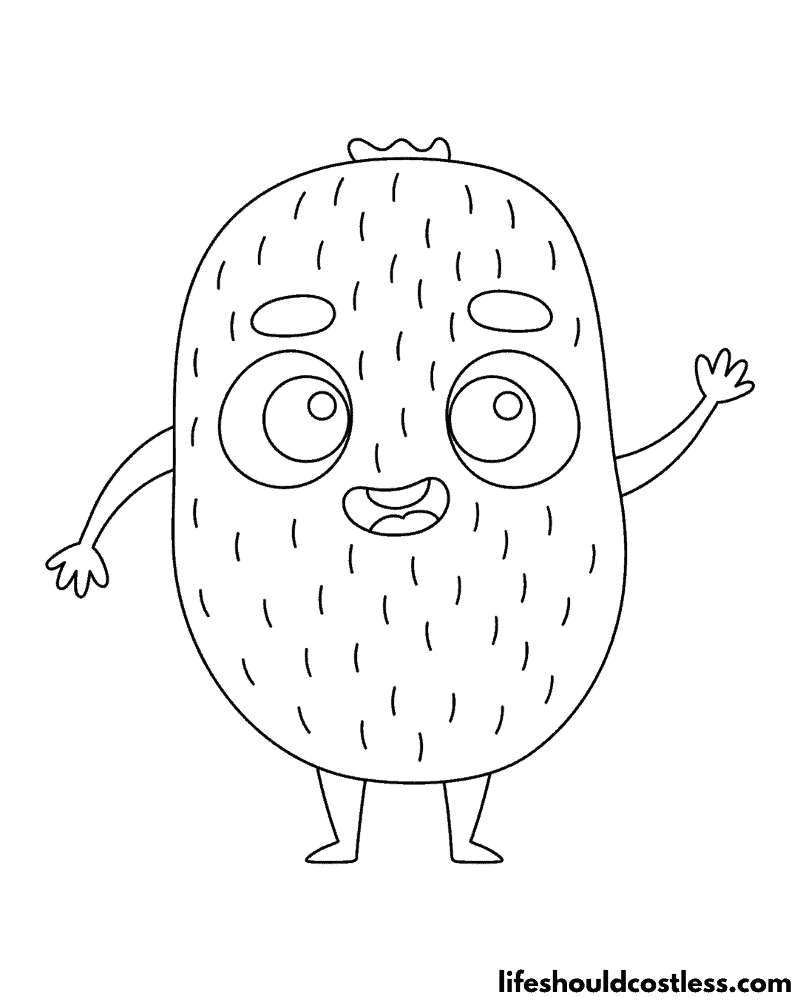
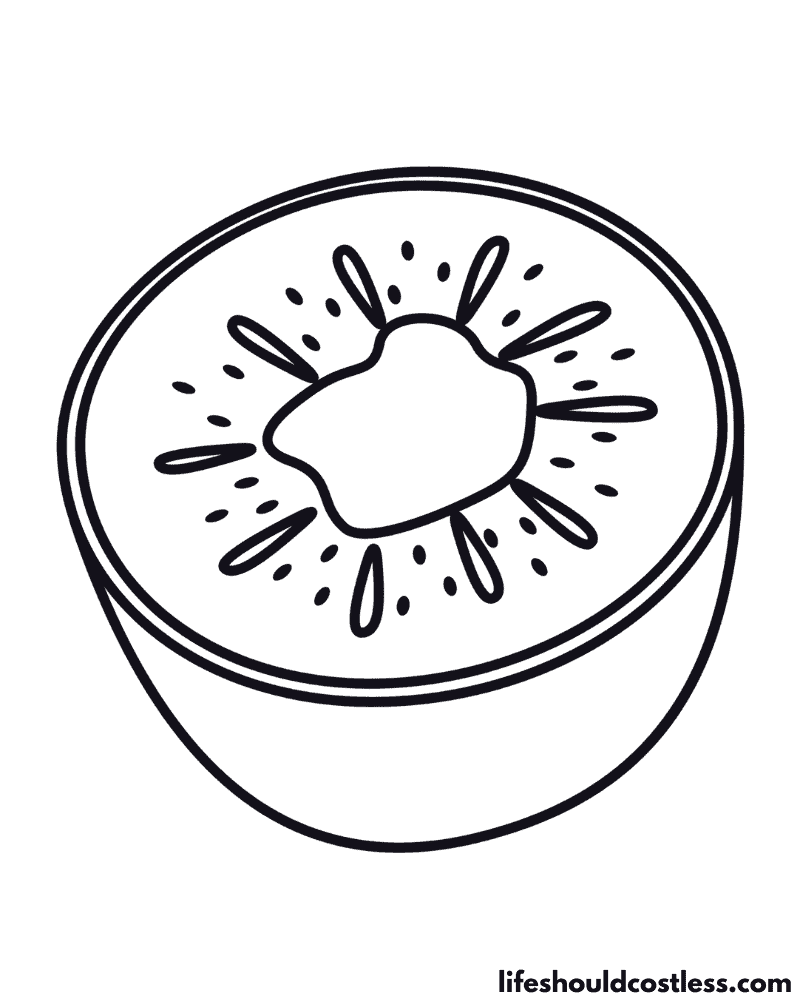
FAQ’s
The color of a kiwifruit’s flesh is typically a vibrant, bright green. However, there are also gold or yellow-fleshed kiwifruit varieties, which have a golden or yellow hue on the inside. The outer skin of a common green kiwifruit is brown and covered in fine, fuzzy hairs.
*I will add more kiwi colour / color questions and answers as the questions get sent to me.
Conclusion
In conclusion, exploring the world of kiwi coloring pages has not only been a colorful adventure but also an opportunity to delve into the rich history and unique characteristics of this delightful fruit.
As we’ve added shades of green and brown to our kiwi creations, we’ve also added a dash of knowledge about its origins, nutritional benefits, and cultural significance.
Whether you’re a seasoned artist or just looking for a relaxing pastime, our kiwi color pages offer a canvas where imagination and education intertwine.
So, the next time you pick up your coloring tools, remember that beneath the fuzzy skin and vibrant hues lies a world of discovery waiting to be uncovered—one stroke at a time. Happy coloring!
Thanks so much for stopping by my blog and supporting my endeavors to make people’s lives a little easier/better/more affordable.
If you liked this post, or found it helpful in any way, please make sure to share it with your family, friends, and co-workers via social media.
Or you could even send them the direct link via email. Whichever way you choose to spread the love, I super appreciate it! ~Sarah
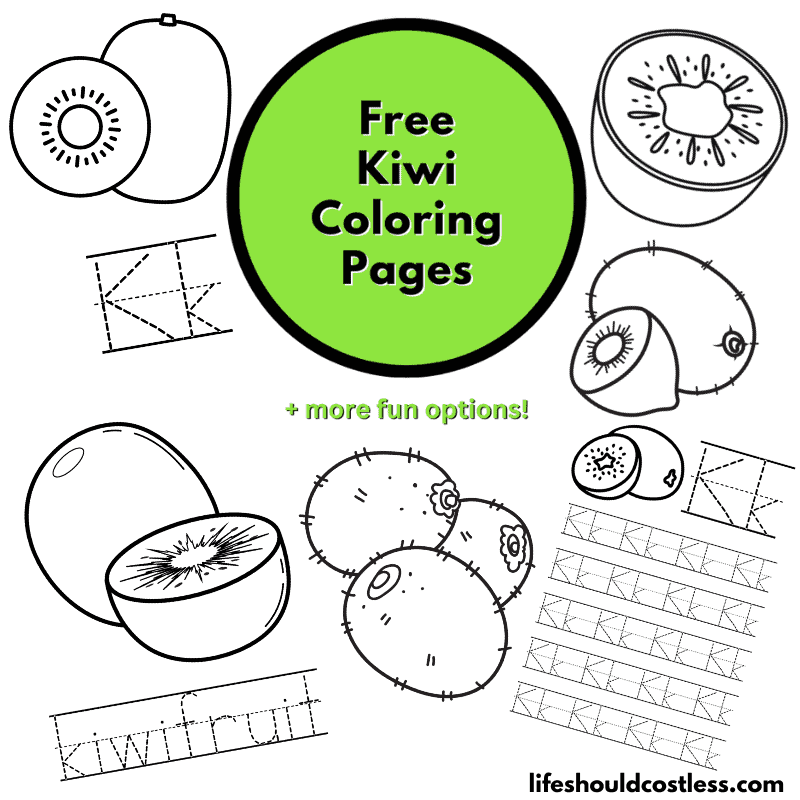
How to follow & support this site
- If you would like to subscribe to my email list, go here.
- Make sure to follow along via social media, by going here.
- If you would like to learn how to really show your support to this site (at no cost to you), go here.
- If you would like to make a direct donation to the site, go here.
Check out my other free printables
- To see all of my free printables, go here.
- If you would like to see my index of free printable coloring pages, go here!
- All of my botanicals coloring pages are found here.
- Or, my other fruits coloring pages can be found here.
Otherwise, here are direct links to several of my other related posts that you’re also going to love:
Botanicals / Fruits
Botanicals / Floral & Misc
Other good resources for a printable kiwi
- https://coloring1268.rssing.com/chan-53056568/article51.html
- https://123coloringpages.com/fruit/kiwi-fruit/
- https://coloringpagesonly.com/pages/kiwi
*This post was originally shared to this blog on 10/30/2023, and has since been updated to improve user experience, add video instruction, as well as to make it as shareable as possible across the social medias.
**Please note that I do try my hardest to provide factual, but easy to understand, information about each topic. If you notice a discrepancy in my coloring pages, facts, or see something that you deem “misinformation/incorrect” please make sure to notify me about it. I would prefer that you send me an email with a link to a more reputable resource on that subject, so that I can correct it as soon as possible. Thanks so much for helping this site become the best that it can be!
***Resources from djinkers were used in the production of this article.
***Resources from djinkers were used in the production of this article.
